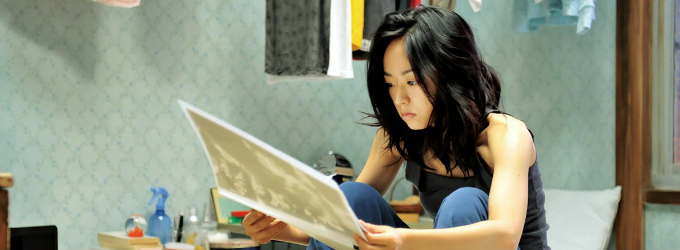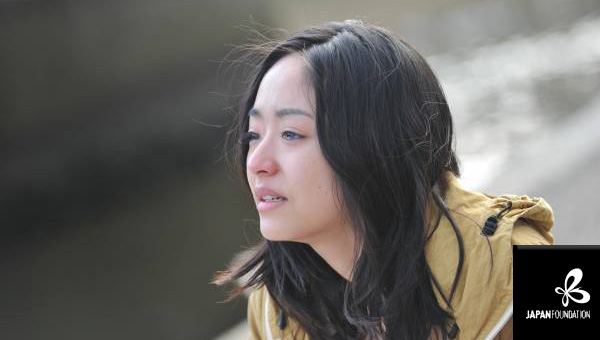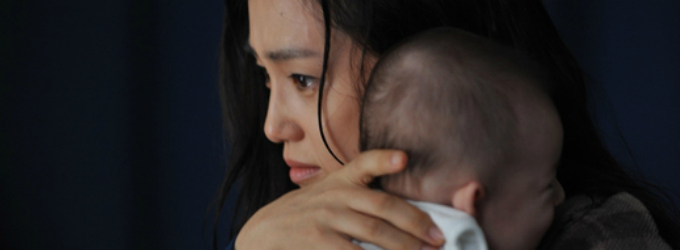 Japan’s relationship with its past is a complex issue, coloured by the legacy of the war, the reality of the experience of seismic and nuclear destruction, an attack on tradition and cultural values in the changing modern world and the prospect of ruinous economic decline. The current Japan Foundation Touring Film Programme, Once Upon A Time In Japan, comprehensively covers many aspects of that theme in a variety of styles.
Japan’s relationship with its past is a complex issue, coloured by the legacy of the war, the reality of the experience of seismic and nuclear destruction, an attack on tradition and cultural values in the changing modern world and the prospect of ruinous economic decline. The current Japan Foundation Touring Film Programme, Once Upon A Time In Japan, comprehensively covers many aspects of that theme in a variety of styles.
But no less complex a question is the individual’s personal relationship with the past. Izuru Narushima’s 2011 film REBIRTH, the winner of no less than 11 awards at the 2012 Japanese Academy Awards, follows the traumatised childhood of Erina, an individual who must confront fundamental questions about her own identity if she is not to repeat mistakes made in the past.
REBIRTH opens with a striking courtroom sequence that draws us deeply into the wider implications of a child abduction. We learn how Erina was stolen as a newborn child by her father’s mistress Kiwako (Hiromi Nagasaku). Having recently had an abortion, Kiwako took the child from her lover and his wife to make up for her own terrible loss. It’s only four years later, when the law catches up with them, that Erina discovers her own true identity. The accused and the accuser face the camera – one calm and collected as she is sentenced, the other screaming out for her abductor’s death.
…she now finds herself in a similar position to the “mother” who abducted her…
The confrontational manner of the opening sequence, and its direct appeal to the viewer, hint at a more personal angle that REBIRTH goes on to examine in the remainder of the film. It takes the fragmented perspective of an older Erina (Mao Inoue), now working as a waitress in a bar. She has never known any stability in her life, or been able to forge a meaningful connection with her real birth-mother. The flashback episodes to her past, to the abduction and to an unconventional upbringing on the road, are not merely a narrative device to gradually reveal backstory, but an integral part of how Erina relates to the world with her confused dual identity. The structure, however, has another purpose: showing events in parallel, in order to relate the real crux of Erina’s dilemma. Pregnant to a married man, she now finds herself in a similar position to the “mother” who abducted her. How can she prevent herself from making the same mistakes as Kiwako had?
This necessary sense of reflection on the past, of learning lessons and the need to be “reborn”, relate to wider questions of what it means to be a woman, what it means to be Japanese and what it means to be a Japanese woman. In the way that it confronts these issues, REBIRTH never takes a simplistic or conventional view, and never accepts that there is an absolute moral position to take. It doesn’t, for example, make it easy to determine who is more guilty – the woman who abducted Erina as a child and lovingly brought her up, or a traumatised mother who is unable to forgive and reconnect with her own child. Neither of them deserve complete condemnation; both of them, in a way, are victims of circumstance. But it’s Kaoru/Erina who suffers most of all.
Melodrama gives way to road movie as Erina retraces her childhood…
Patriarchal society is recognised as a serious problem inherited from the past. The malaise and corruption at the core of society, and the dangers associated with it, are mentioned in passing reference to the 1995 sarin gas attacks on the Tokyo Underground by the Aum Shinrikyo doomsday cult. But it’s a cult that gives shelter to Kiwako and Kaoru without asking any questions. There are certainly some sinister elements to the Angel Home and the cult’s eccentric leader, but it is essentially a shelter for women who need to escape from the world for their own personal reasons. Without necessarily condoning the idea of cults, it’s the film’s openness to consider “alternative” ways of living that is the key here. It’s another young woman from Erina’s past who proposes a way of reopening those avenues which were closed off by her unconventional upbringing, and who suggests a way to avoid making the same mistakes.
Formally, REBIRTH is a beautifully constructed film in its use of colours and tones, and in its choice of music. It gives the characters – anchored by some very fine acting performances – room to breathe. Melodrama gives way to road movie as Erina retraces her childhood, leaving Tokyo for the more remote parts of Japan. But Narushima never settles for conventional revelations or resolutions, using the journey rather to explore what it means to be human. Erina shows us that there is potential for discovering great beauty and true freedom in the infinite possibilities that are open to us all, if we can break these bonds of the past.
Reinventing the Past Through the Eyes of Japanese Contemporary Filmmakers
Marking its 10th anniversary, the Japan Foundation Touring Film Programme looks back into the past through the eyes of contemporary filmmakers. Touching upon a trend prevalent in recent Japanese cinema, this season showcases a series of works from directors including Takashi Miike, Sunao Katabuchi, Hirokazu Kore-eda and Isshin Inudo, who all share the same aspiration to reinterpret and relive moments of times gone by through a variety of genres, styles and tones. The programme began on 1 February 2013 and its nationwide tour runs until 27 March 2013.



One thought on “Rebirth”
Comments are closed.